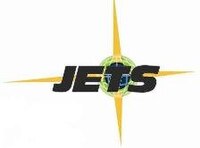This article has multiple issues. Please help improve it or discuss these issues on the talk page . (Learn how and when to remove these messages)
|
 | |
| Formation | 1950 [1] |
|---|---|
| Type | Non-profit organization |
| Headquarters | Alexandria, Virginia |
| Location | |
Official language | English |
President | Peter Carrato, Ph.D., P.E |
| Website | http://www.jets.org/ |
Junior Engineering Technical Society (JETS) was a national non-profit organization based in the United States dedicated to promoting interest in science, mathematics, engineering, and technology among high-school students. [2] In 2011, the Test of Engineering Aptitude, Mathematics, and Science (TEAMS) and Unite programs of JETS were acquired by the Technology Student Association [3]

